Basque Country: A Cyclist’s Guide to Northern Spain
Explore the Basque Country with this cycling guide on hand, covering coastal climbs, forested hills, key routes, and the best seasons for riding.
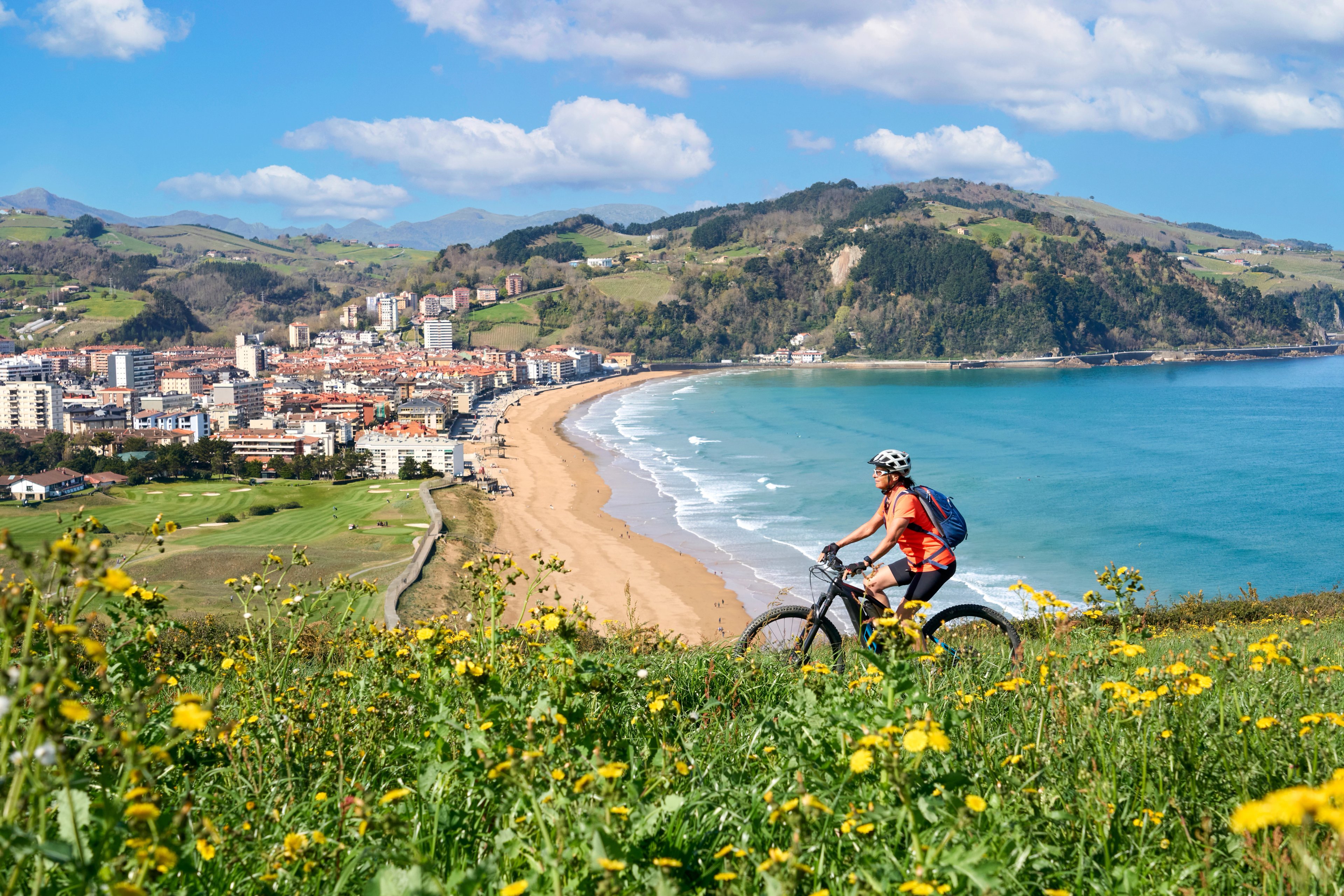
Quick Links
Set between the Atlantic Ocean and the western Pyrenees, the Basque Country offers one of Spain’s most distinctive cycling landscapes. No other region in the country matches its combination of steep coastal cliffs, forested ridges, and tight inland valleys shaped by fast-moving Atlantic weather.
What You Need to Know at a Glance
Geography: Northern Spain between the Atlantic coast and the western Pyrenees; a small, mountainous region with a strong cultural identity
Main hubs: Bilbao, San Sebastián, Gernika, Vitoria-Gasteiz
Key landscapes: Coastal cliffs, forested hills, deep green valleys, and vineyard foothills
Gradient profile: Frequent 8–12% pitches; occasional longer climbs in inland areas
Road width: Narrow rural lanes with limited traffic; wider connectors approaching cities
Best suited for: Intermediate and experienced cyclists comfortable with repeated elevation gain
Terrain type: Roughly 95% paved roads; around 5% hard-packed gravel on rural connectors
Climate: Mild and humid with fast-changing Atlantic weather; cooler summers than most of Spain
Best time to go: April–October for the most stable and comfortable riding conditions
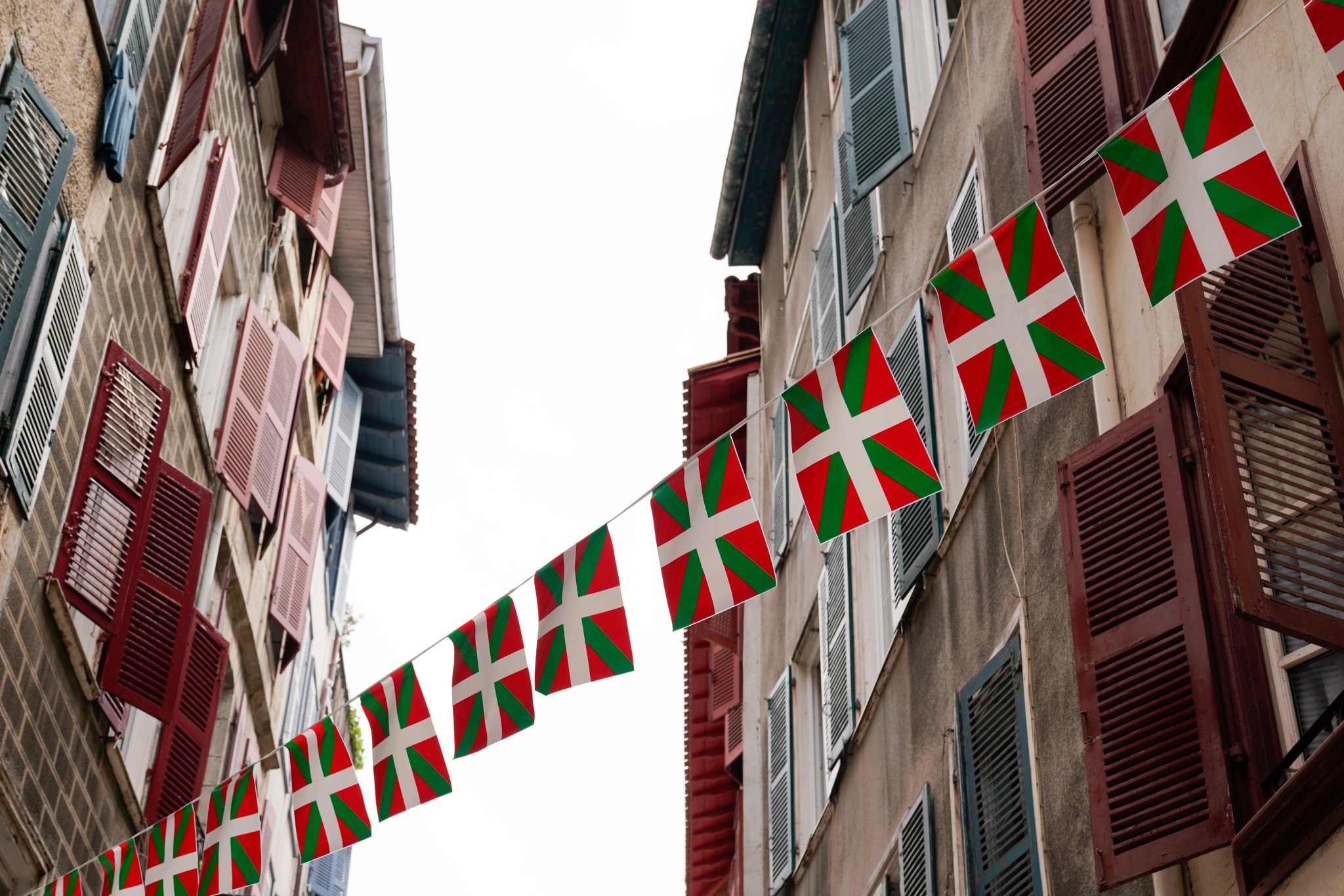
Culturally and linguistically unique, the Basque Country has its own ancient language, Euskara, and a long tradition of independence reflected in its towns, food, and architecture. Riders move between fishing ports, medieval centers, and vineyard foothills, experiencing a region that carries a strong sense of identity and pride.
What to Expect When Cycling
Routes in the Basque Country follow a clear pattern: short, steep climbs that build elevation quickly, quiet rural lanes through dense forests, and balcony roads that track the Atlantic coastline.
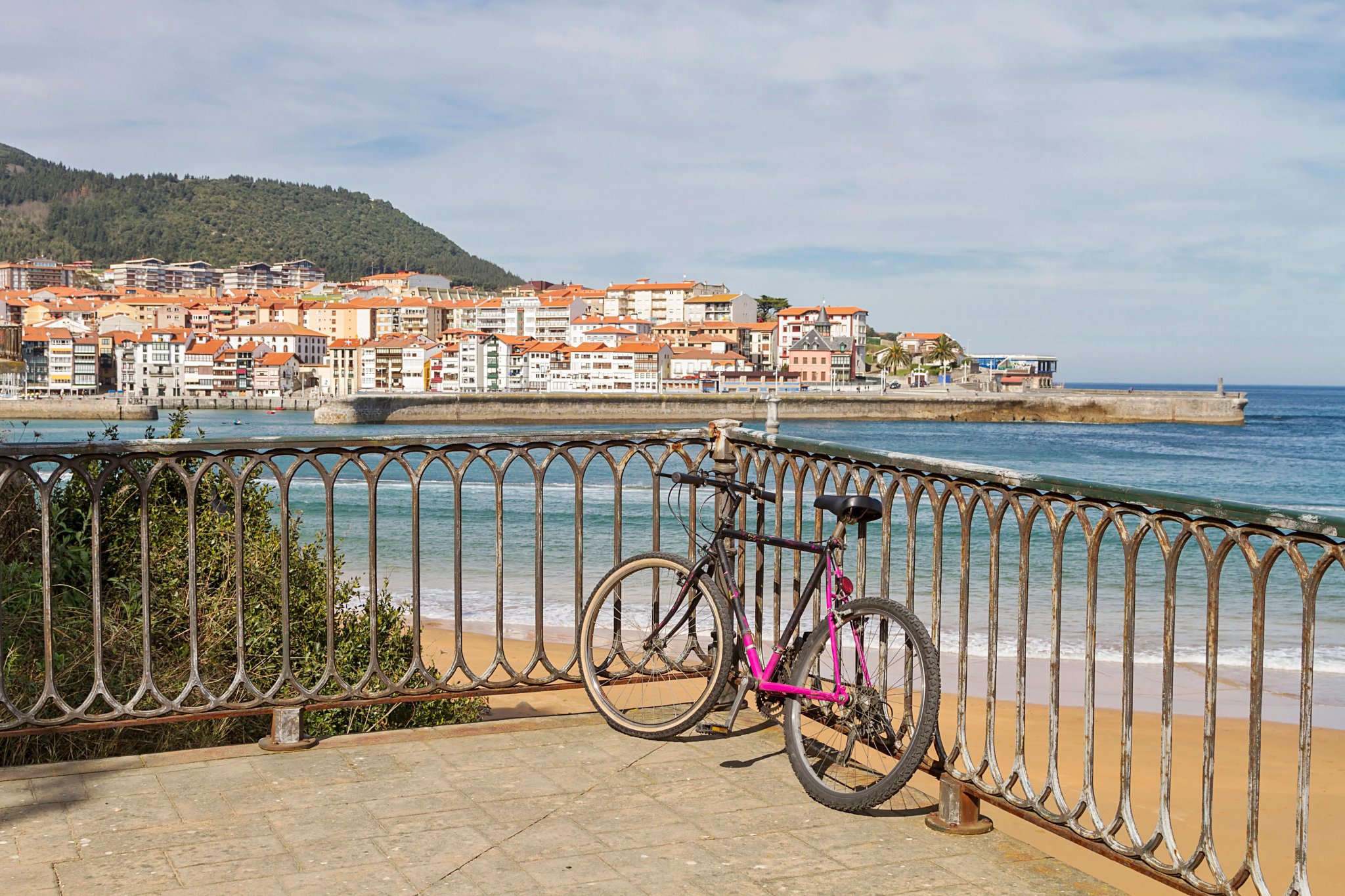
Town spacing is convenient, meaning regular access to water, cafés, and food, even in rural areas. The weather can change fast due to Atlantic microclimates, with cloud cover, drizzle, and wind variations common throughout the year.
Elevation: Expect frequent gradients of 8–12% and steady elevation gain even on medium-distance days
Wind: Coastal stretches can be breezy; inland forested areas are generally sheltered
Traffic levels: Low on rural and interior roads; moderate when approaching larger towns
Signage: Reliable on major regional roads; more limited on minor forest lanes
Road surface: Mostly smooth tarmac; occasional damp or mossy patches in shaded areas
Landscape & Terrain Overview
The Basque Country features three main types of terrain:
Coastal Terrain
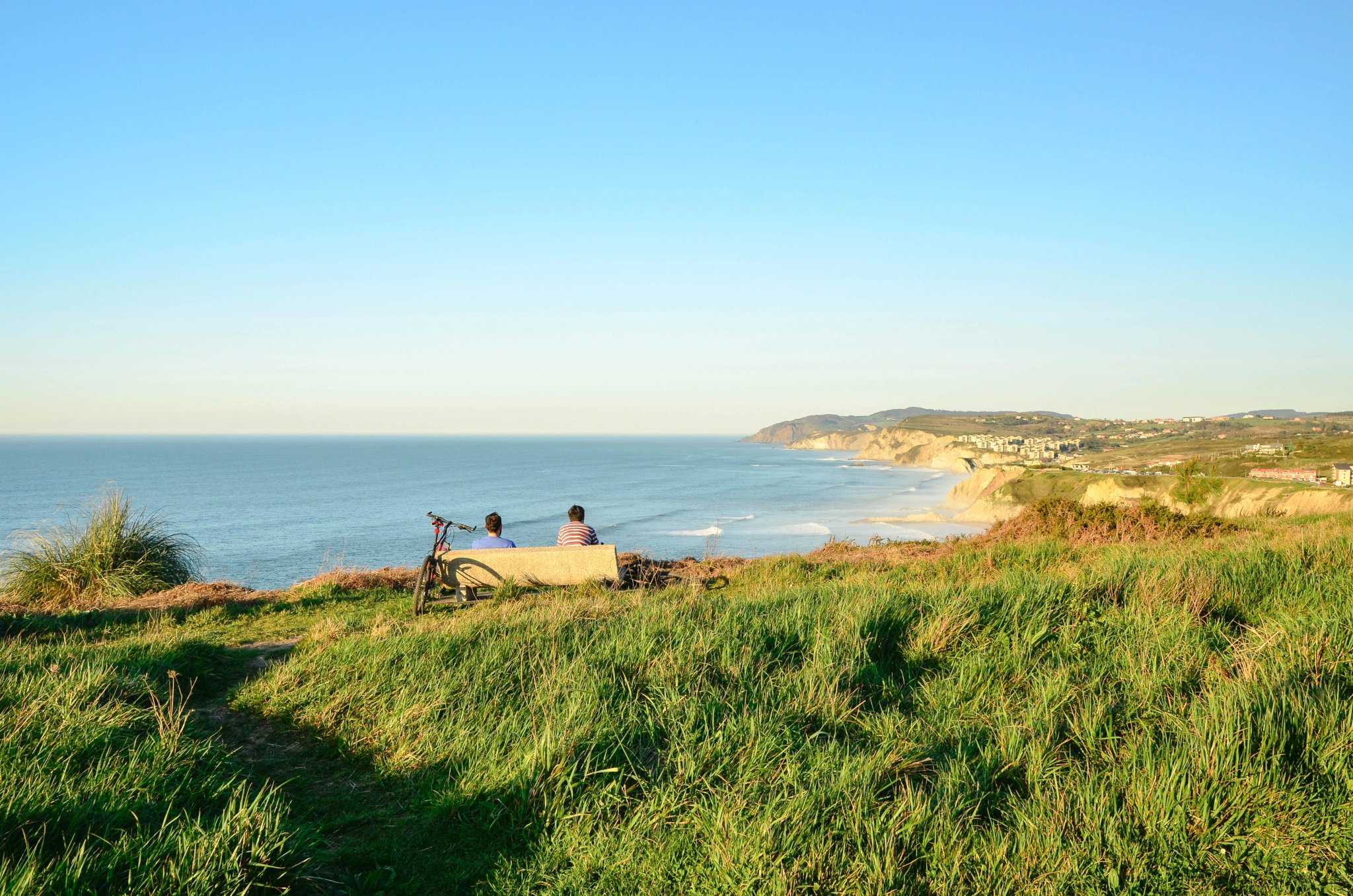
Balcony roads overlooking the Bay of Biscay
Short climbs to headlands with wind exposure
Fishing towns and maritime landscapes
Forest & Mountain Interior
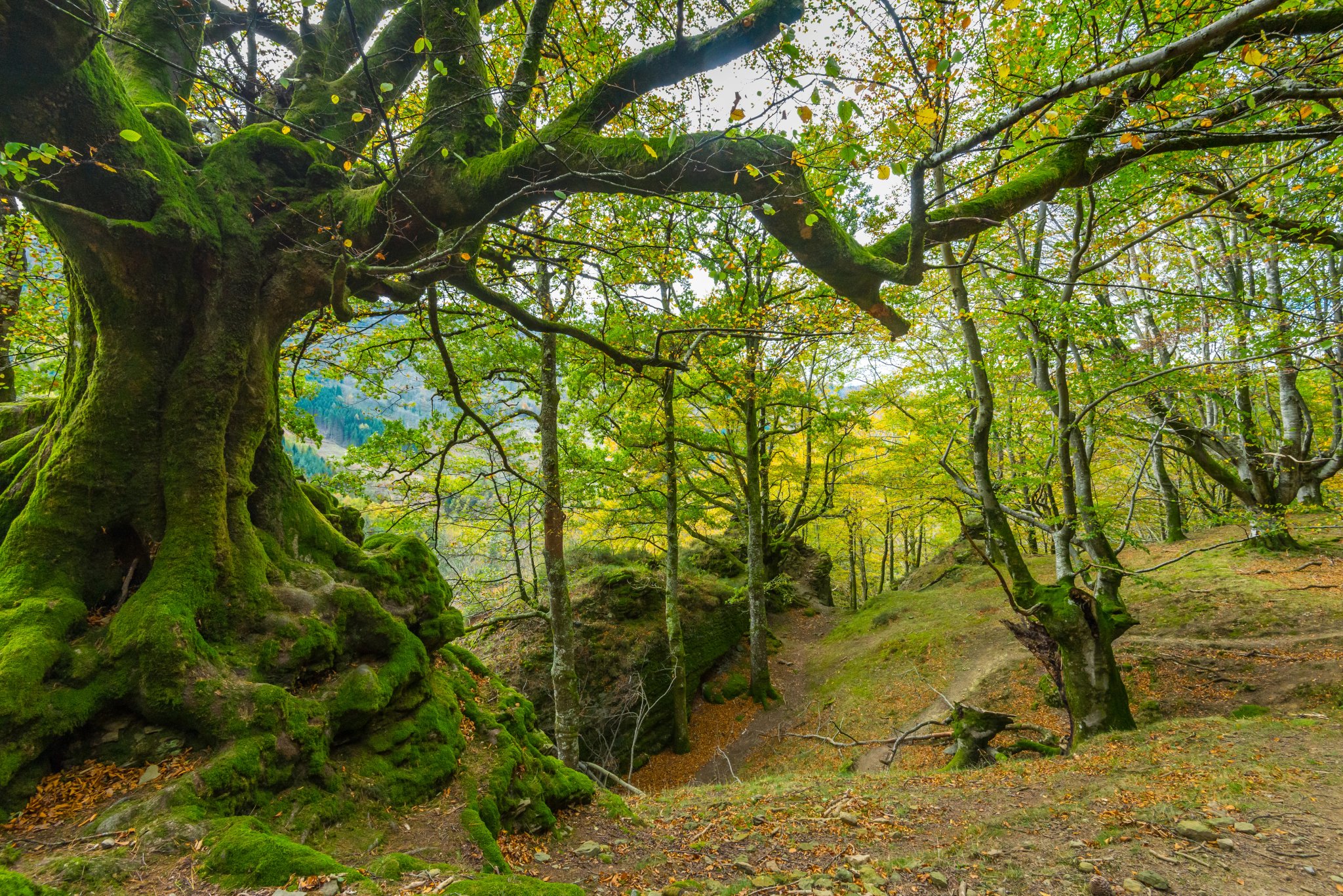
Beech and oak forests with consistent shade
Steep gradients and technical descents
Quiet rural lanes winding between small hamlets
Vineyard & Foothill Transition Zone
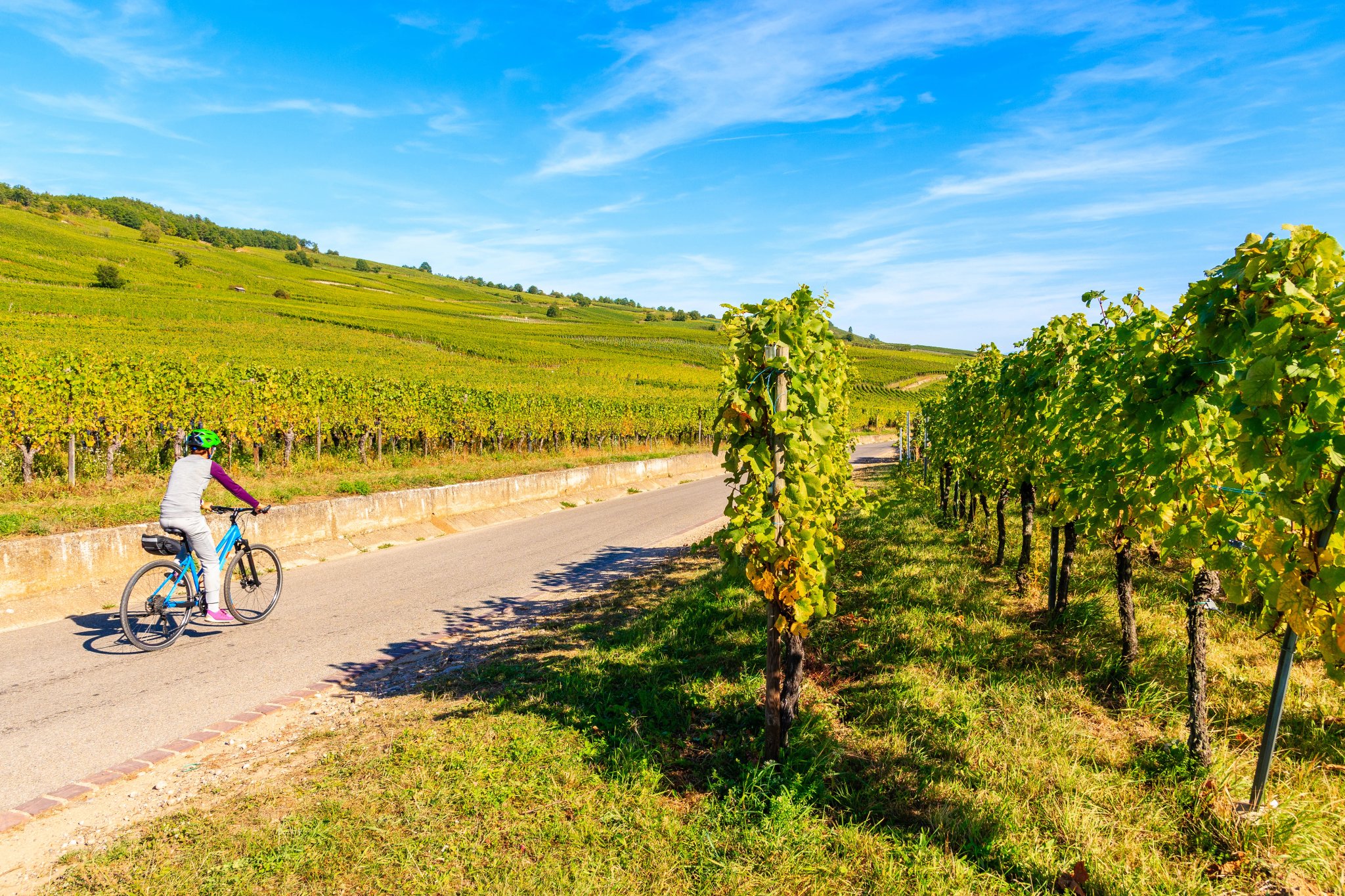
Rolling hills leading toward Rioja Alavesa
Warmer, drier air compared with the Atlantic coast
Agricultural valleys and medieval hill towns
Cultural & Historical Highlights
The Basque Country’s history stretches back to prehistoric settlements, with Euskara—its native language—considered one of the oldest in Europe and unrelated to any other. The region’s coastal towns and inland valleys preserve medieval street layouts, fortified hilltops, and centuries of maritime and agricultural tradition.
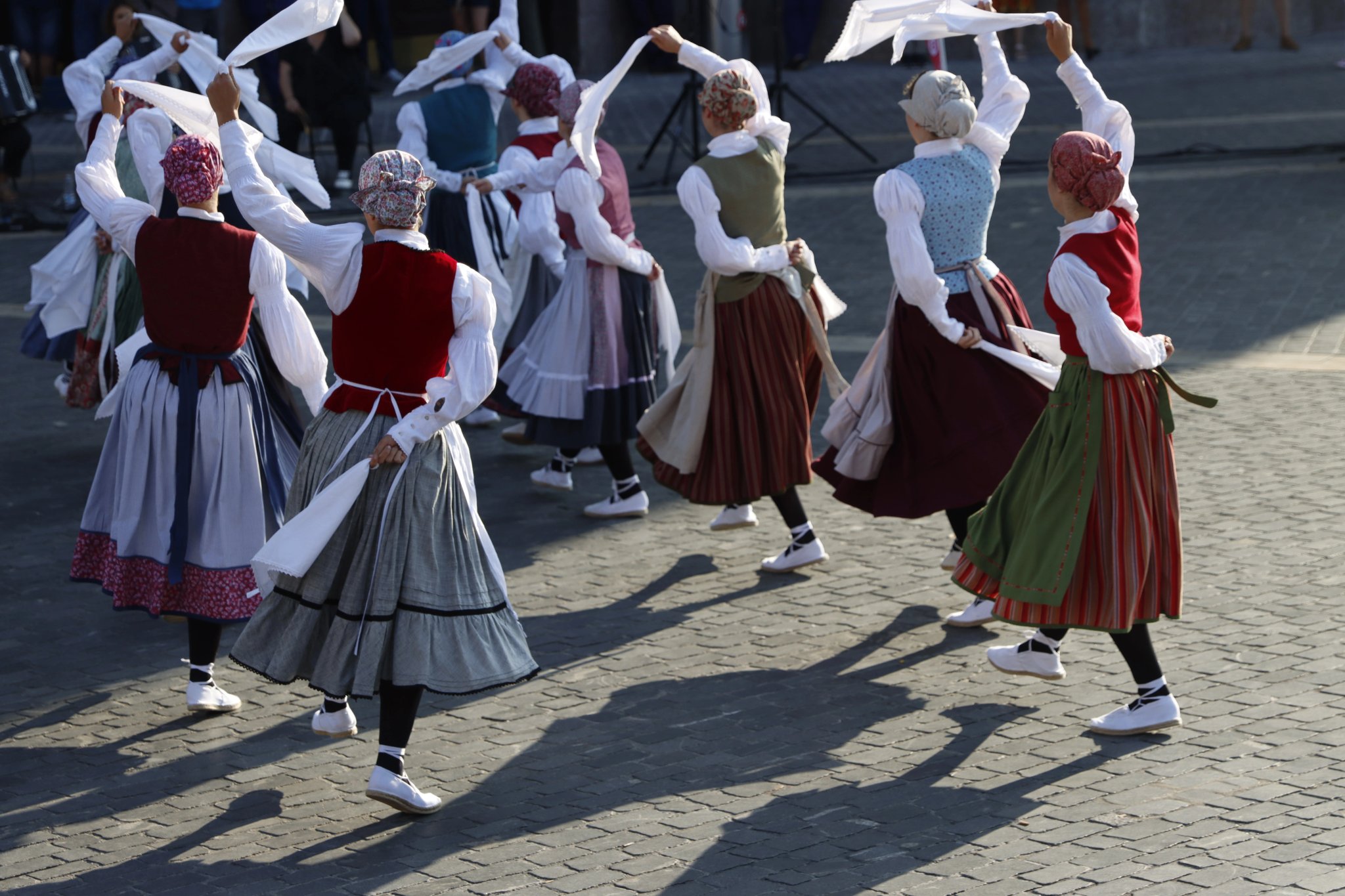
Many of the key cycling corridors pass through areas designated for their cultural importance, including one of Spain’s UNESCO Biosphere Reserves, Renaissance-era town centers, and historic sites connected to major events such as the 1937 bombing of Gernika, a defining moment in European modern history.
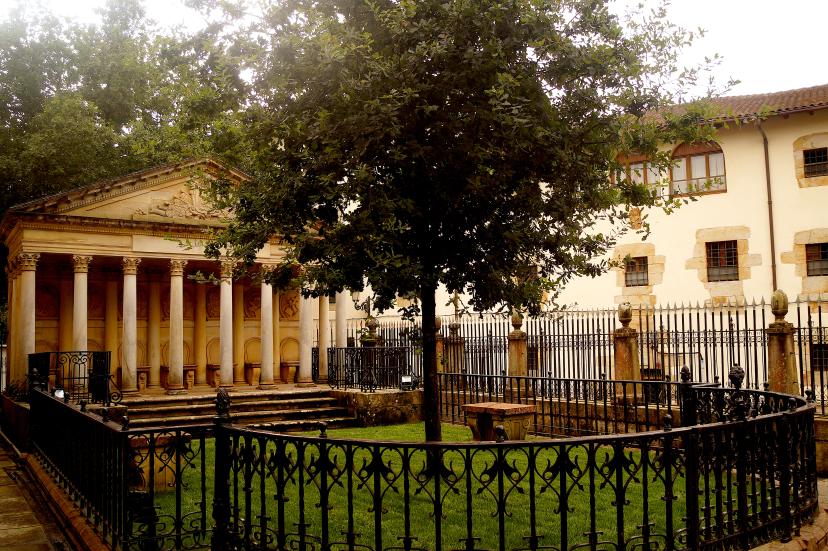
Gernika Assembly House
The Assembly House stands at the heart of Gernika, long considered the symbolic center of Basque political life. Its oak tree and meeting hall have hosted regional gatherings for centuries, marking it as one of the most historically significant sites in northern Spain. Cycling routes pass directly through Gernika, making it a natural cultural stop between the inland hills and the Urdaibai estuary.

Urdaibai Natural Park
Covering 22,000 hectares along the Basque coast, Urdaibai is a UNESCO Biosphere Reserve with over 250 bird species, including herons, eagles, and osprey. The park encompasses estuaries, cliffs, oak forests, and beaches. Visitors can explore 100+ km of trails, enjoy kayaking on the Oka River, and spot seals along the shoreline, making it one of northern Spain’s ecological gems.

Old Town of San Sebastián
San Sebastián’s historic core sits between the harbour and Monte Urgull, defined by 19th-century boulevards, narrow lanes, and one of Spain’s most renowned food districts. Its layout reflects centuries of maritime and urban development along a sheltered bay. For cyclists, the old town marks the final approach on Atlantic routes, linking scenic ridge roads with the city’s extensive coastal cycle network.
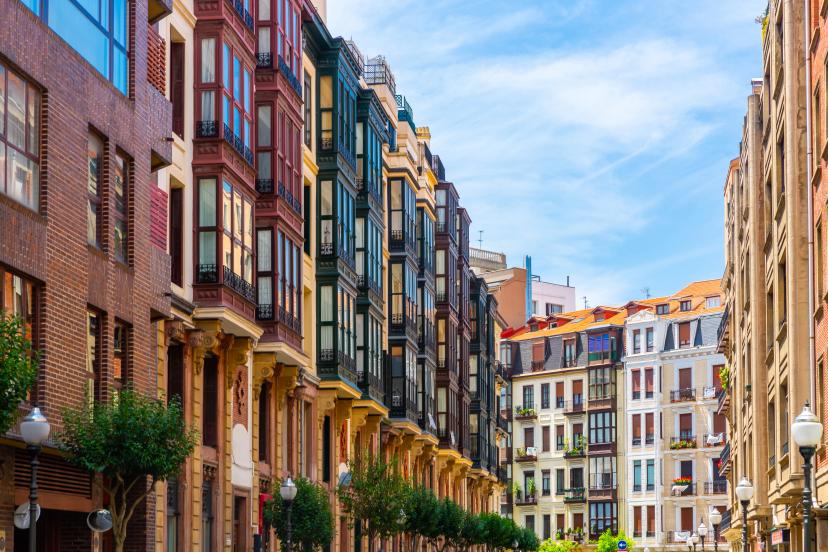
Bilbao’s Historic Quarter
Known as the Casco Viejo, Bilbao’s oldest district centers on the medieval Siete Calles and the 14th-century cathedral. The neighbourhood sits along the Nervión River, where industrial heritage and modern redevelopment converge in a compact, walkable area. Rides starting or ending in Bilbao cross this district naturally, using riverfront cycle paths and quiet connectors that lead into the surrounding hills.

Getaria
Getaria’s coastal center combines a medieval grid with an active fishing harbour, set on a narrow peninsula projecting into the Bay of Biscay. The town is also known for Txakoli vineyards that rise steeply behind its historic streets. It serves as a key waypoint on coastal cycling stages, offering sheltered views, seafood taverns, and access to rolling roads that link toward Zarautz and Zumaia.
Curious to know what else Spain has to offer? We have gathered everything you need in the must-see places guide.
When to Go
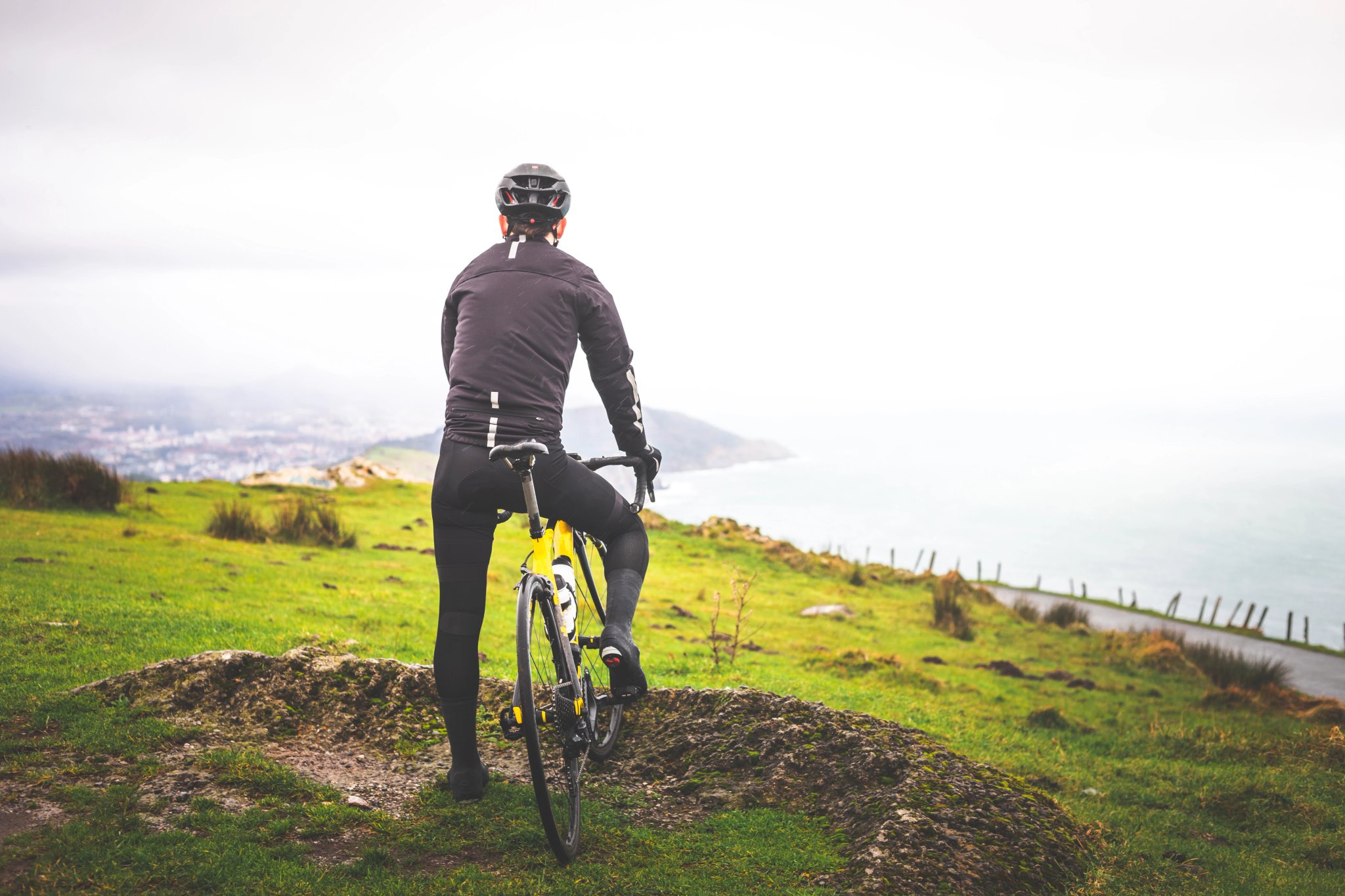
The Basque Country’s Atlantic climate makes cycling most reliable from April to October, with mild temperatures, long daylight hours, and cooler conditions than most of Spain. Weather can shift quickly near the coast, but spring and early autumn offer the most stable, comfortable riding days. Here are the seasons at a glance:
Spring (April–June)
Mild, green, and reliable, with 14–20 °C and long daylight hours. Forests stay cool, cafés reopen after winter, and rainfall decreases through May.
Best for: All cyclists — balanced temperatures, steady conditions, and comfortable climbs
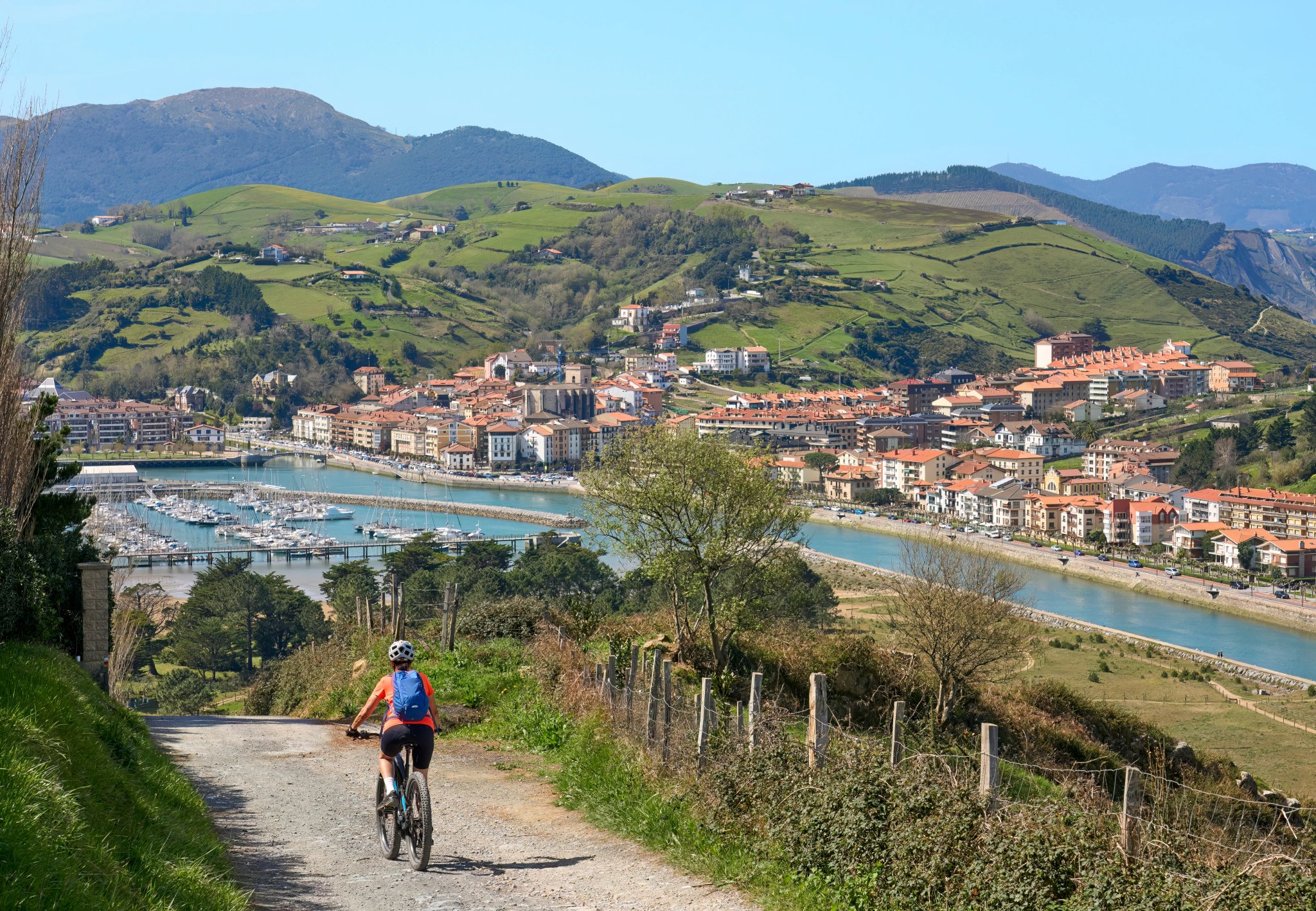
Why ride in spring:
Ideal temperatures for medium and long rides
Clearer views after winter rains
Forested climbs stay cool
Great for both inland hills and coastal routes
Summer (July–August)
Warm but rarely extreme, typically 20–28 °C. Atlantic breezes keep coastal towns comfortable, while inland valleys feel warmer and more humid.
Best for: Riders who enjoy lively towns, long daylight, and warm-but-manageable conditions
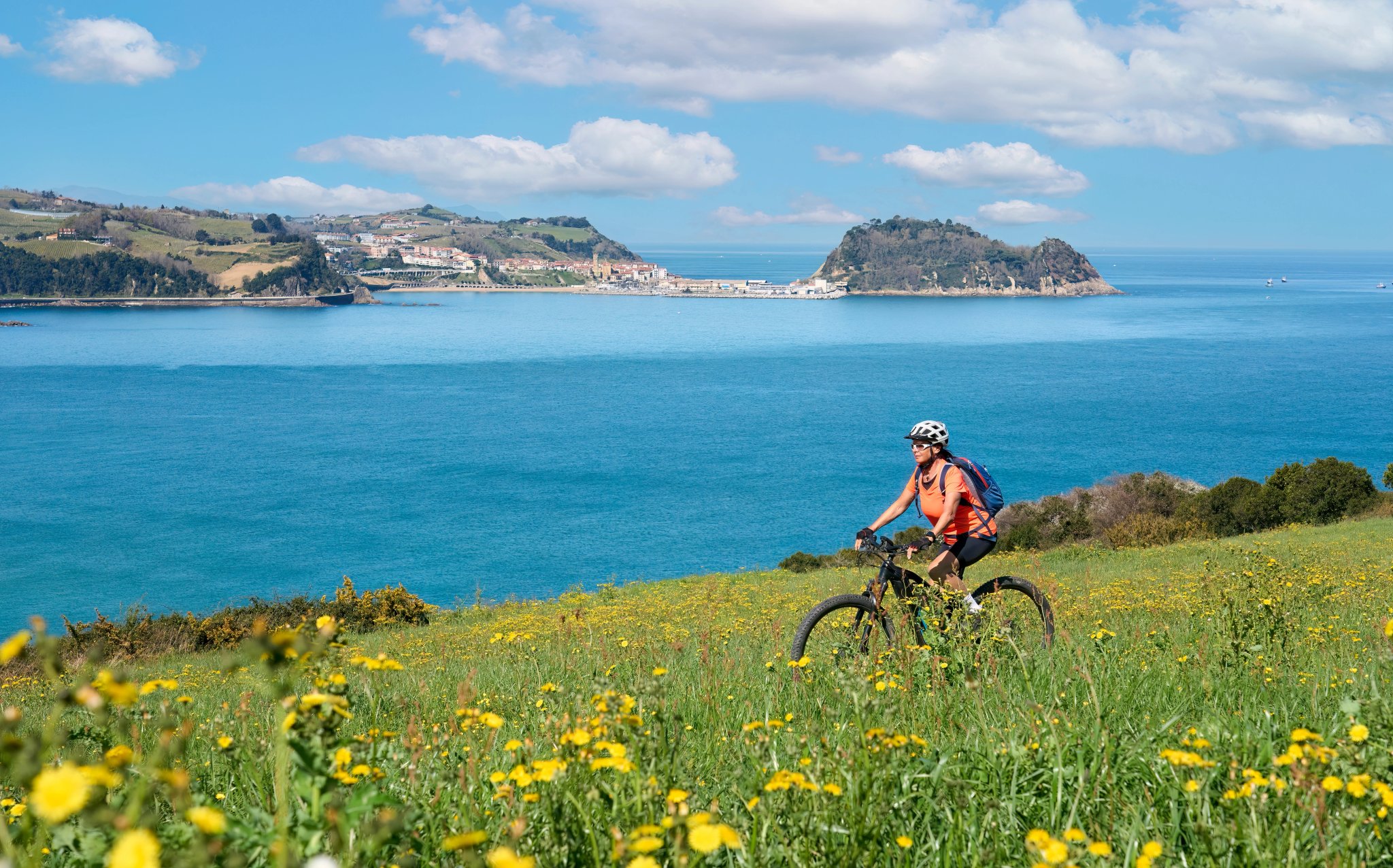
Why ride in summer:
Cooler than most of Spain due to Atlantic influence
Long evenings and active coastal towns
Reliable café and service availability
Good light for photography on coastal roads
Autumn (September–October)
Calm and pleasant, with 18–24 °C and stable weather. Vineyard foothills reach harvest season, humidity drops, and coastal routes stay quiet.
Best for: Medium- and long-distance riders seeking predictable conditions

Why ride in autumn:
Harvest season scenery in Rioja Alavesa
Stable, dry months with comfortable temperatures
Quiet routes after summer tourism
Excellent coastal visibility and mild winds
Winter (November–February)
Cool and variable, averaging 8–14 °C. Rain is more frequent, and higher ridges can be cold and damp, but cycling is still possible on lowland and coastal routes.
Best for: Experienced cyclists comfortable with changeable weather
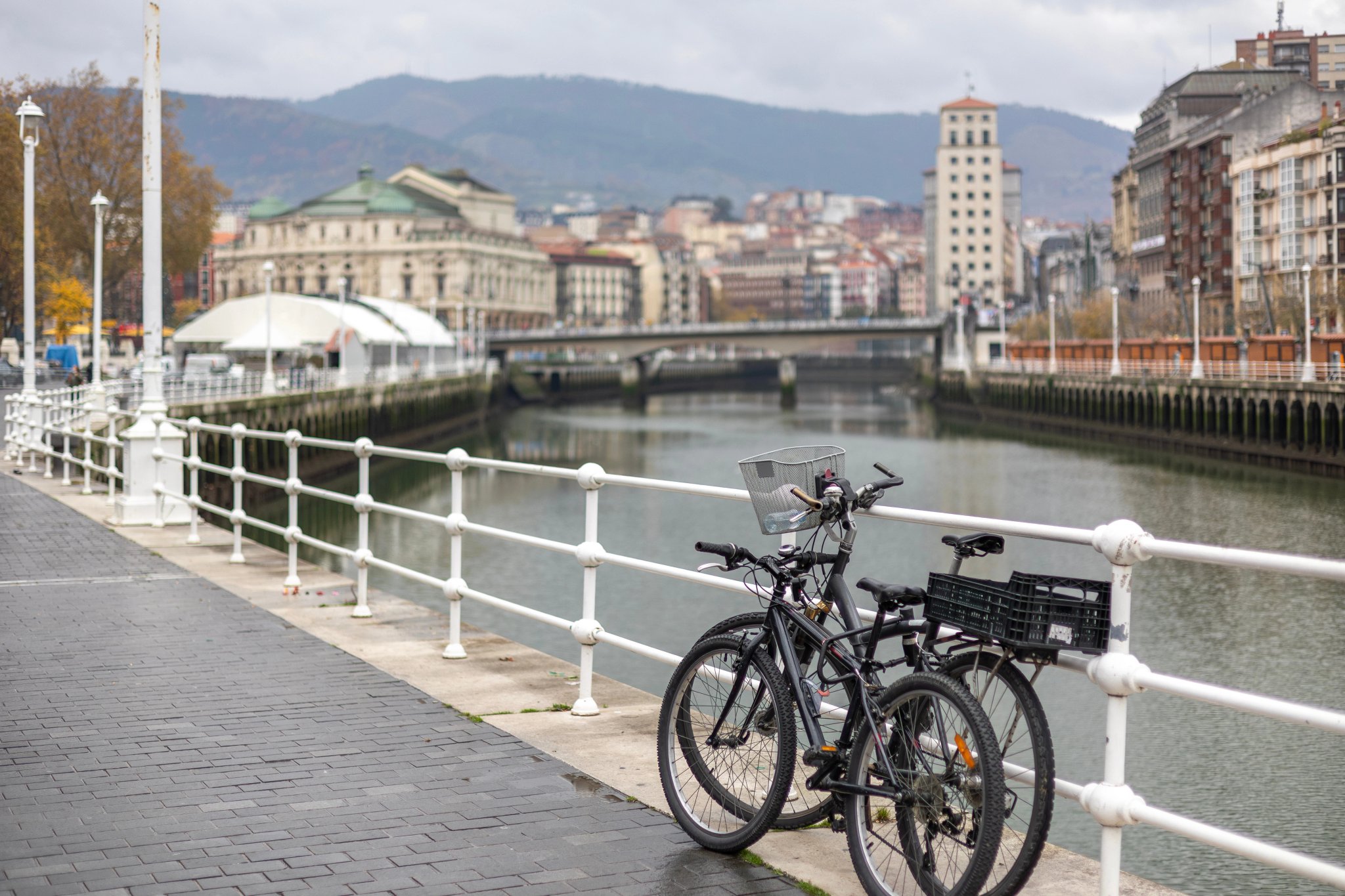
Why ride in winter:
Quietest months on coastal roads
Lowland routes remain accessible
Mild temperatures compared with much of Europe
Good time for shorter valley and estuary rides
Tip: Atlantic weather changes fast — early starts help avoid afternoon cloud build-up, and riders should pack a light wind or rain layer year-round.
See a more detailed monthly weather guide for other regions in our Spanish cycling weather guide.
Basque Cuisine
Food is a central part of Basque culture, and cycling routes naturally pass through towns and coastal villages known for long-standing culinary traditions. Even short stages offer access to markets, pintxo bars, and family-run eateries where regional dishes are prepared using local seafood, farm produce, and mountain ingredients.
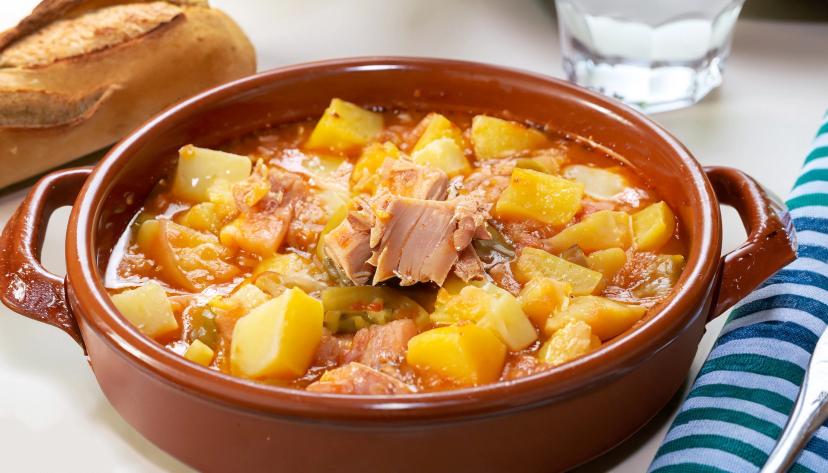
Marmitako
A coastal stew originally prepared by Basque fishermen, Marmitako combines tuna, potatoes, peppers, and onions simmered until thick and aromatic. The dish has deep maritime roots, once cooked aboard fishing boats during long tuna campaigns in the Bay of Biscay. It remains a practical, energy-dense option for riders, especially in cooler months when coastal humidity makes warm meals more appealing.

Txuleton (Basque Steak)
Txuleton refers to thick, bone-in steaks sourced from mature cattle, grilled over hot embers and seasoned simply with coarse salt. Cuts are typically 800 g or more, reflecting the region’s emphasis on aged beef and traditional farmhouse cooking. Many rural restaurants along coastal and inland routes serve txuleta as a shared dish, making it a common evening meal after demanding riding stages.

Basque Cheesecake
Known for its caramelized exterior and soft, almost molten center, Basque cheesecake emerged from San Sebastián’s bar culture in the late 20th century. Despite having only a few ingredients, its texture and lightly toasted crust distinguish it from other regional desserts. It appears widely in coastal towns and is often recommended as a light, high-energy dessert suitable after long climbing days.
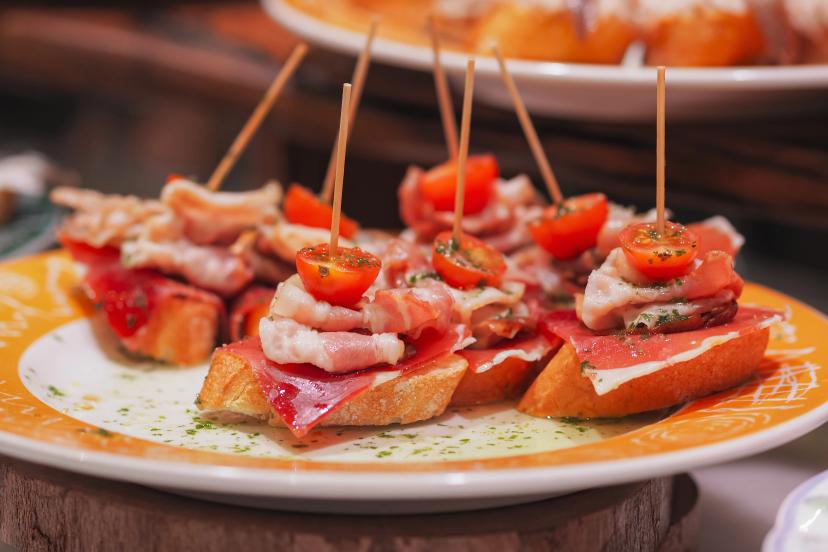
Pintxos
Pintxos are small, bar-counter dishes traditionally served on bread or skewers, reflecting the Basque habit of combining local seafood, vegetables, and cured products in bite-sized form. Portions vary by town, but San Sebastián’s old quarter is considered one of the most concentrated pintxo districts in Europe. For cyclists, pintxo bars offer quick mid-ride or post-ride meals, with many kitchens open throughout the afternoon—unlike in other parts of Spain.
Hungry for more? Check out our Spanish cuisine guide for some other things you can eat along the way.
Most Popular Cycling Routes
The Basque Country’s terrain naturally forms compact but highly varied cycling corridors — from dramatic Atlantic headlands to shaded forest climbs and vineyard foothills. These routes capture the region’s defining mix of steep gradients, coastal scenery, and culturally rich towns.
1. Bilbao → Gernika Coastal & Forest Loop
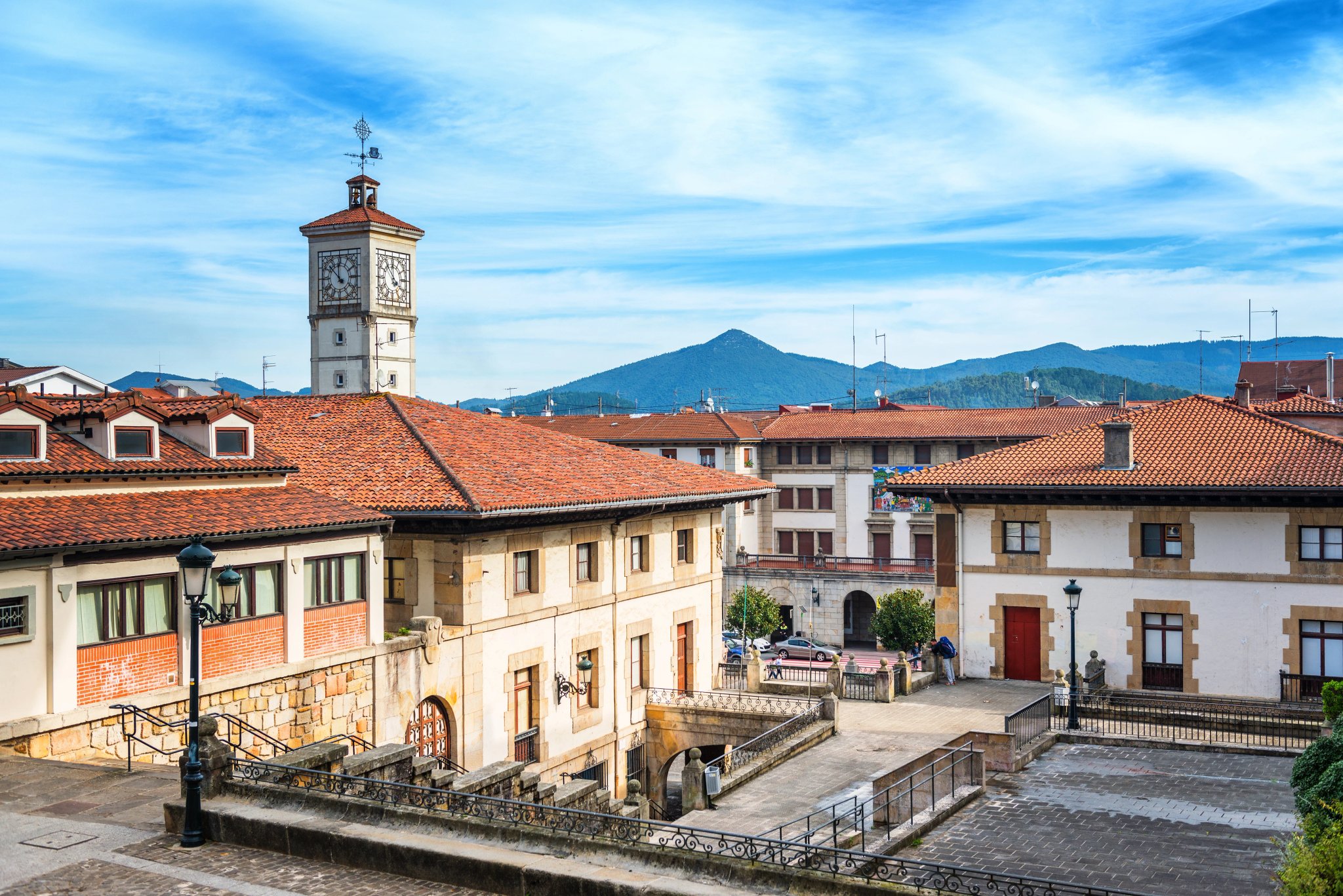
A mixed coastal–inland route linking Bilbao’s riverside exits with the rolling hills around Gernika. Expect shaded forest climbs, smooth secondary roads, and open views near the estuary.
Quick facts:
Distance: 60–80 km
Highest point: ~350–450 m
Difficulty: Moderate
Terrain: Forest climbs, rolling coastal roads, narrow rural lanes
Best for: Mixed days balancing elevation, scenery, and cultural stops
Experience on the Basque Country Cycling Tour
2. Gernika → Lekeitio Atlantic Traverse
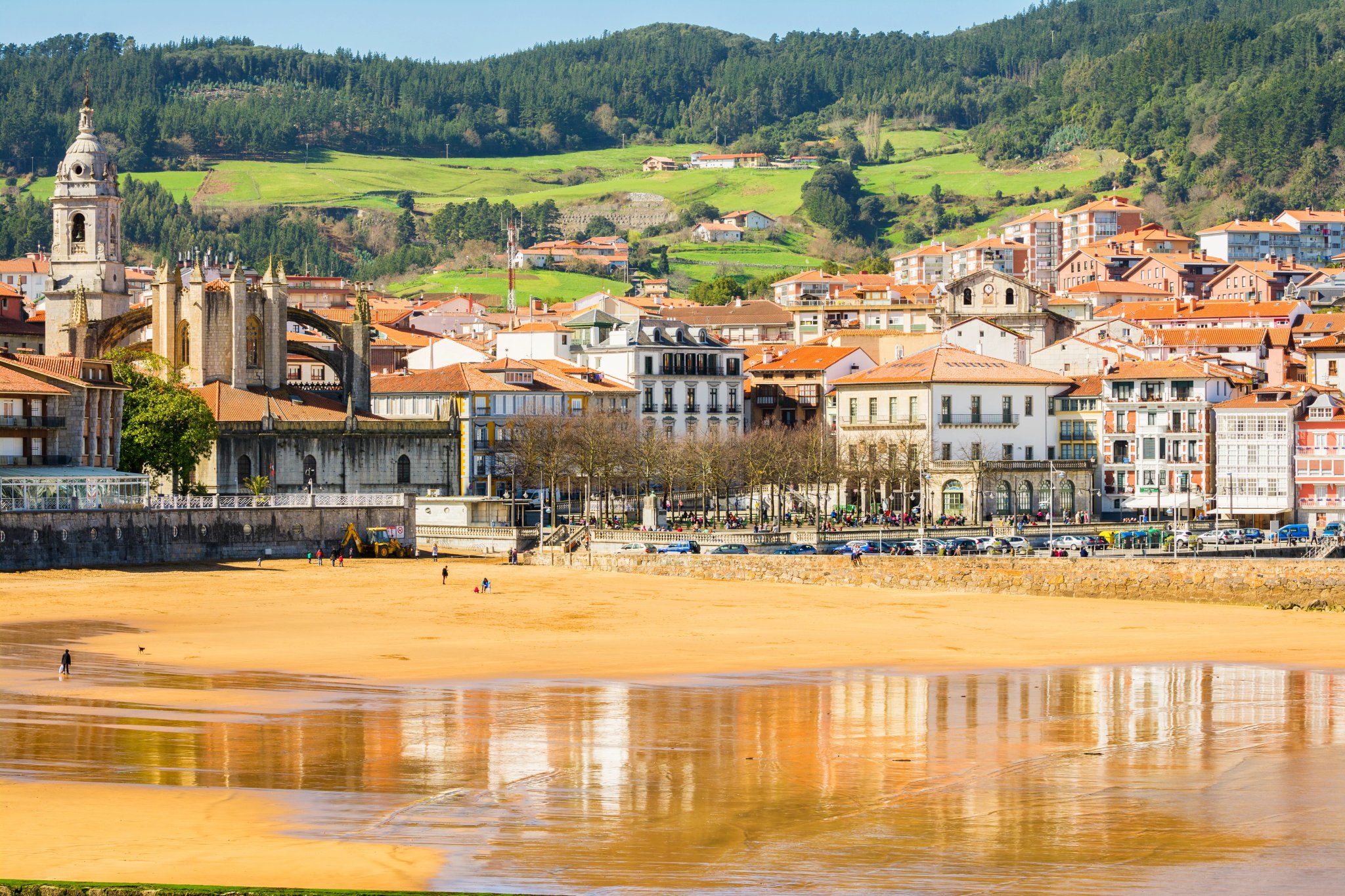
Quick facts:
Distance: 45–65 km
Highest point: ~300–400 m
Difficulty: Moderate–Hard
Terrain: Steep ascents, forested ridges, coastal descent
Best for: Riders who enjoy elevation-rich days with strong scenery shifts
3. Lekeitio → Getaria Coastal Road
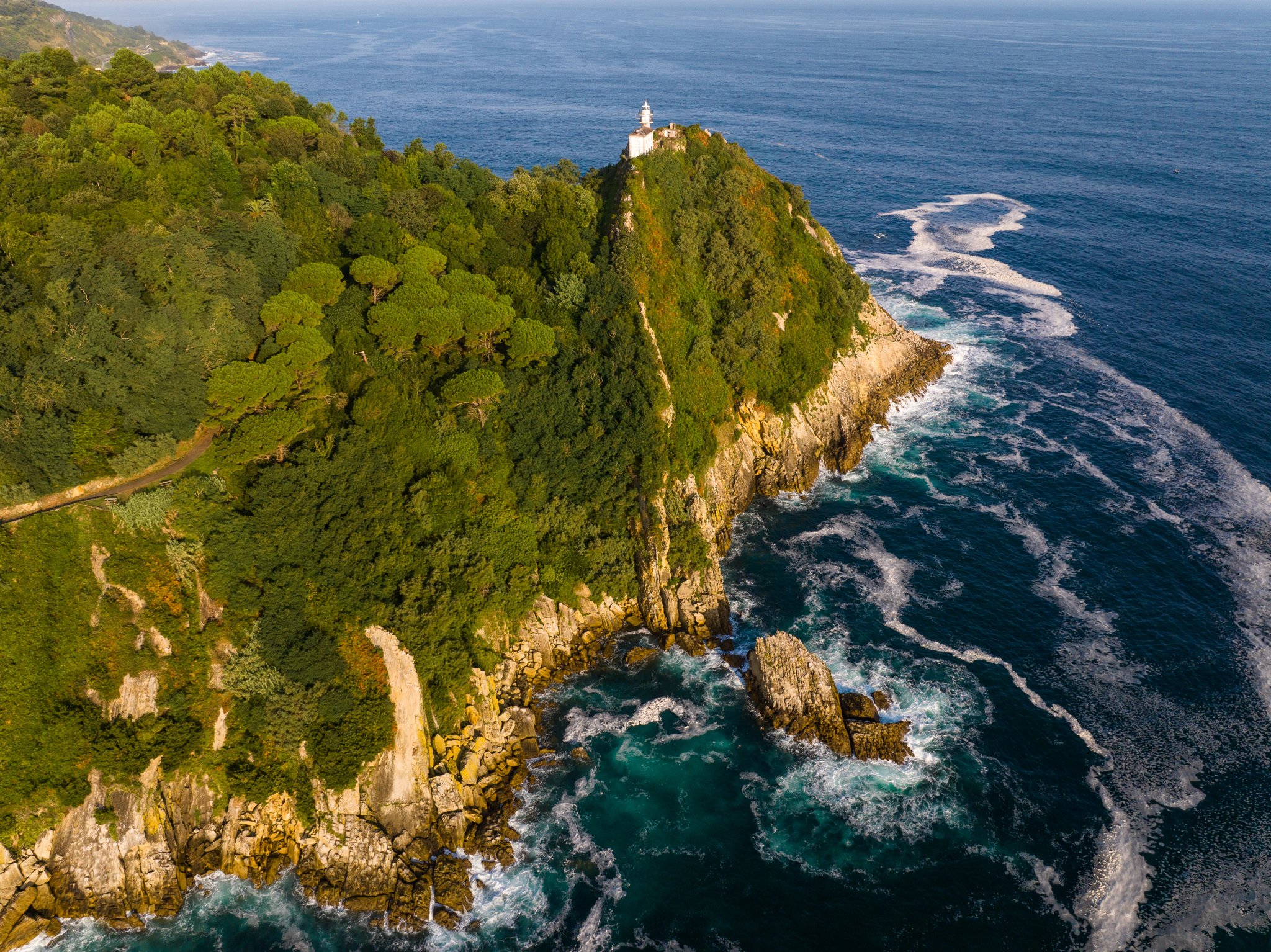
Quick facts:
Distance: 50–70 km
Highest point: ~250–300 m
Difficulty: Easy–Moderate
Terrain: Coastal balcony roads, rolling hills, exposed headlands
Best for: Scenic coastal stages and steady, enjoyable riding
4. Rioja Alavesa Vineyard Circuit
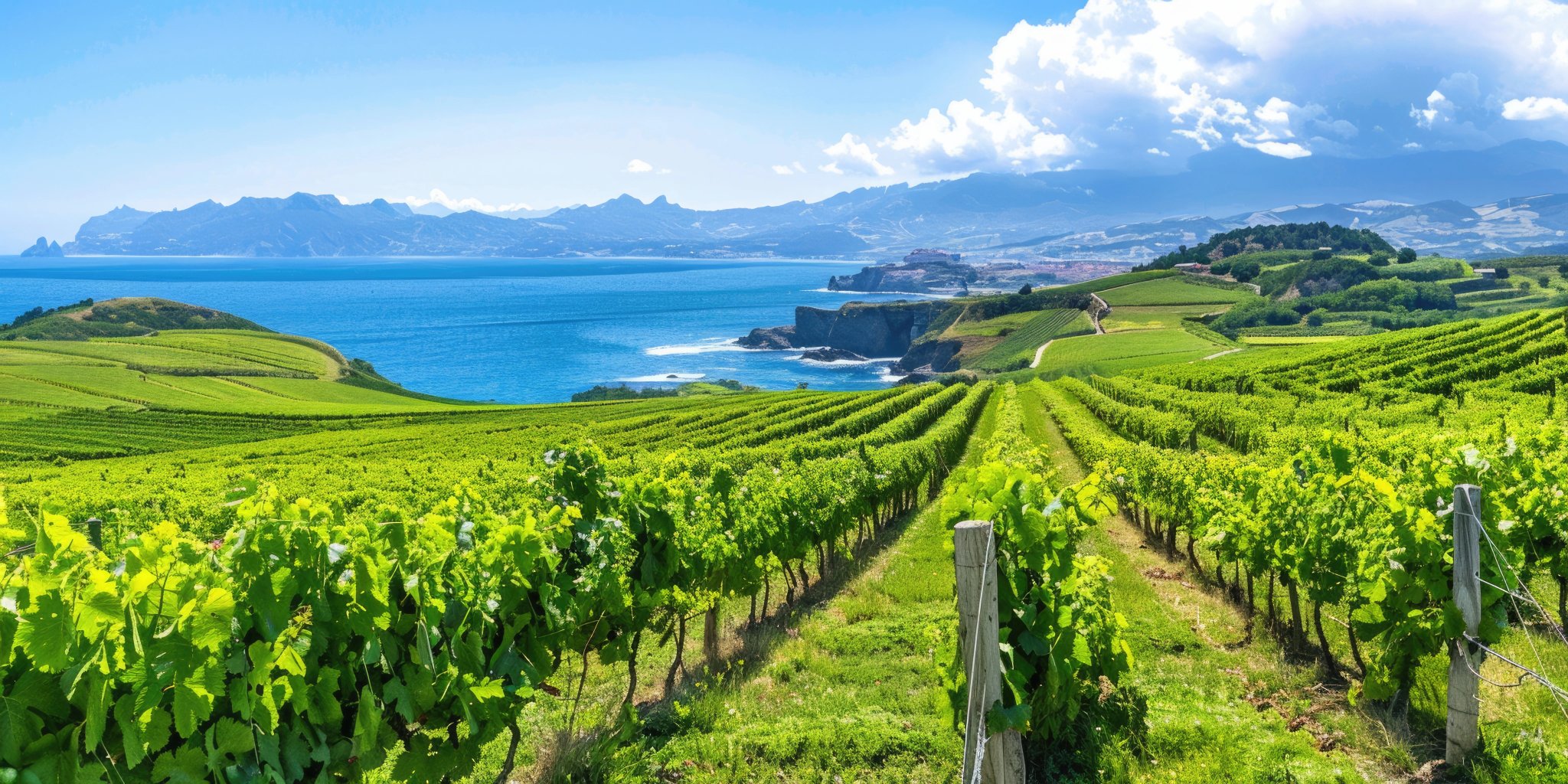
Quick facts:
Distance: 55–75 km
Highest point: ~650–750 m
Difficulty: Easy–Moderate
Terrain: Rolling farmland, vineyard valleys, steady gradients
Best for: Wine-region scenery and smooth, cultural riding days
See this route in all its beauty on The Ultimate Wine Tour of Rioja
5. San Sebastián Mountain Ridge Loop
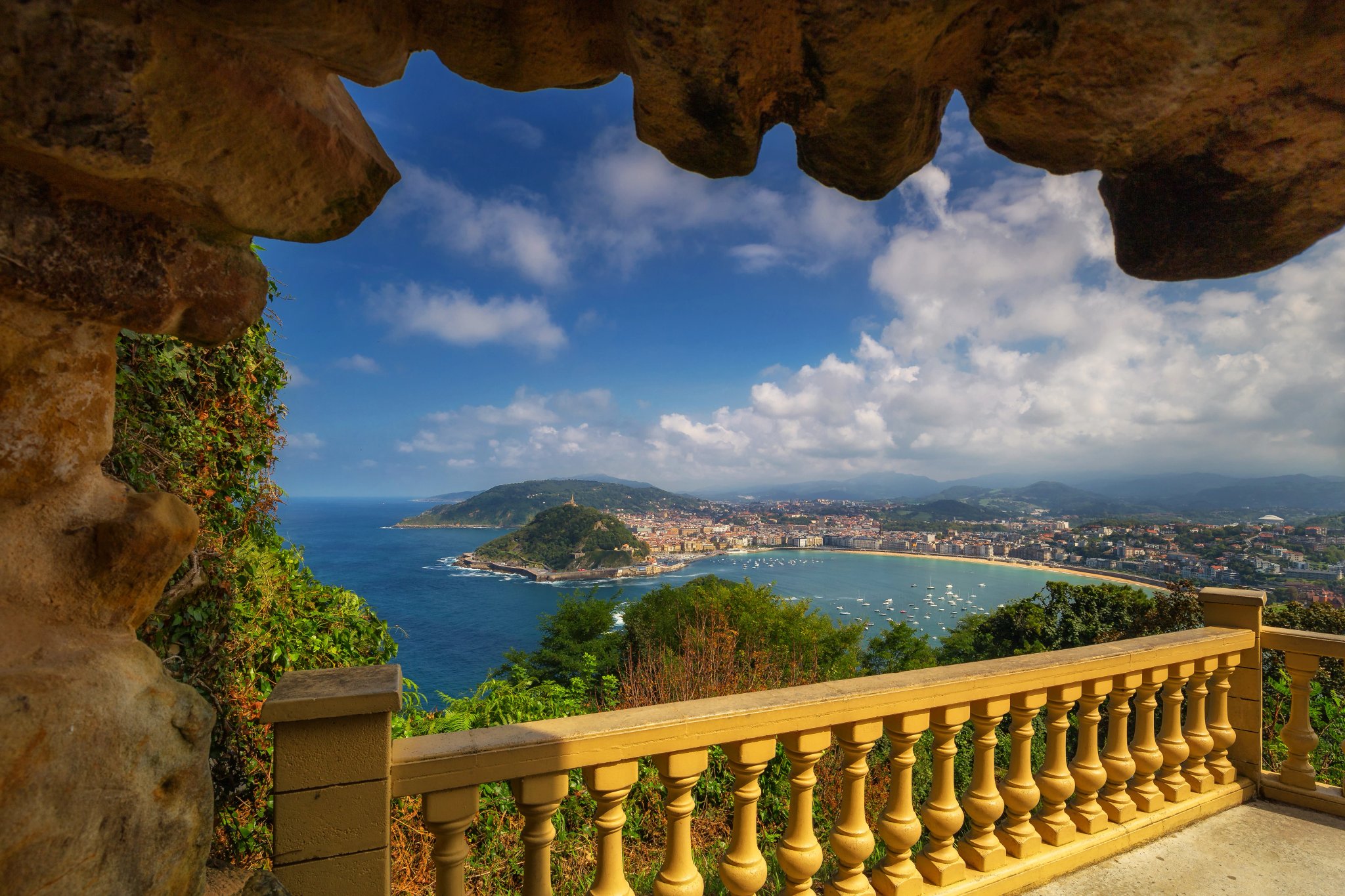
Quick facts:
Distance: 40–70 km
Highest point: ~450–550 m
Difficulty: Moderate–Hard
Terrain: Steep ridge climbs, forest gradients, technical descents
Best for: Experienced riders seeking high-intensity mountain stages
Suggested Itinerary:
This 7-day route links Bilbao with the coastal landscapes of Lekeitio, the vineyard foothills around Getaria, and the cultural hub of San Sebastián. Daily distances are moderate, gradients steady but frequent, and terrain variety keeps every stage engaging — making it an excellent introduction to northern Spain’s Atlantic riding.
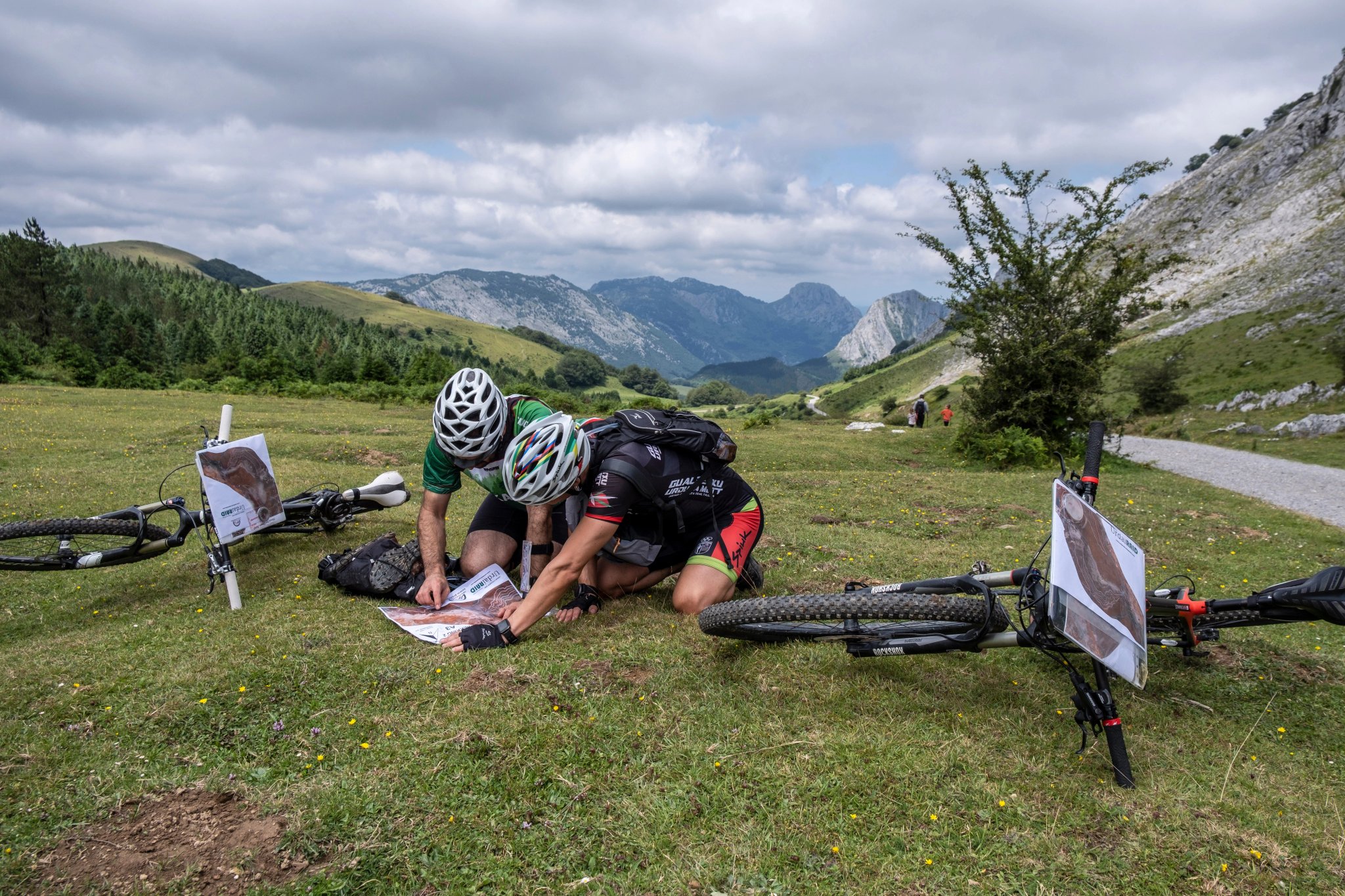
Day 1: Arrival in Bilbao
Settle into Bilbao, a major gateway to the Basque Country. The city blends industrial heritage with world-class architecture and vibrant neighborhoods along the Nervión River.
Day 2: Bilbao → Gernika
Ride out of Bilbao on quiet rural roads, climbing steadily into forested hills before descending toward Gernika’s historic center. The route mixes open valley sections with shaded gradients typical of the region.
Distance: ~33 km
Elevation: ~900 m
Surface: Paved rural lanes; occasional narrow forest sections
Day 3: Gernika → Lekeitio
A varied stage that begins in the gentle Urdaibai area before turning toward steeper climbs and a fast coastal descent into Lekeitio. The final approach offers some of the best maritime views of the week.
Distance: ~35 km
Elevation: ~675 m
Surface: Paved; rolling interior roads with a coastal finish
Day 4: Lekeitio → Getaria
Follow the coastline through small fishing towns before tackling a set of short, demanding climbs toward Getaria. The mix of sea views, narrow lanes, and inland ridges creates one of the trip’s most rewarding transitions.
Distance: ~56 km
Elevation: ~1,330 m
Surface: Paved coastal and inland roads; technical gradients in places
Day 5: Circular Ride & Pagoeta Natural Park
Spend a second night in Getaria and choose between a rest day or a circular ride through vineyards and rural valleys. The loop offers cooler inland air and quiet lanes through Pagoeta’s green slopes.
Distance: ~38 km
Elevation: ~755 m
Surface: Paved rural roads; mild gradients with forest cover
Day 6: Getaria → San Sebastián
A shorter but scenic stage following ridgelines and sections of the historic Camino route. The final descent provides wide views over San Sebastián’s bay before entering the city’s extensive cycle network.
Distance: ~30 km
Elevation: ~660 m
Surface: Paved rural lanes; steady climbs and smooth urban finish
Day 7: Departure from San Sebastián
Your journey ends in one of Spain’s most admired coastal cities. Excellent rail and airport connections make onward travel simple and flexible.
Ride with this itinerary here:
What to Pack
Packing for the Basque Country is straightforward, but Atlantic weather requires slightly more flexibility. Conditions can shift from cool mornings to mild, breezy afternoons, and forested areas stay humid year-round. Light, breathable layers work best, with a wind or rain shell for sudden changes.
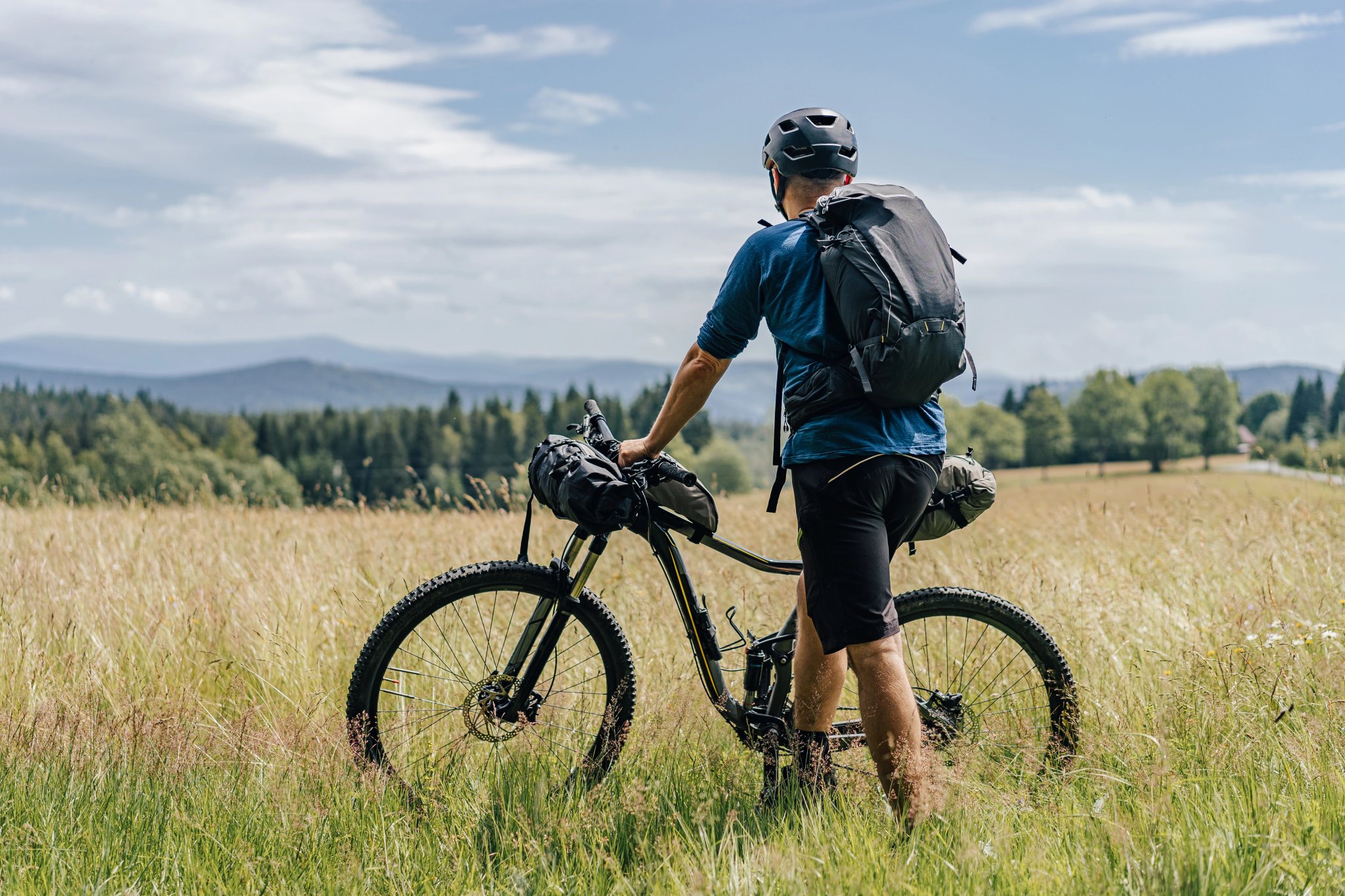
Essentials
Cycling gear: Padded shorts, breathable jerseys, a lightweight wind or rain jacket, and a warmer layer for shaded forest climbs
Footwear: Comfortable cycling shoes or trainers suitable for short walks in coastal and historic towns
Helmet: Recommended for all riders
Day bag or panniers: Helpful for water, snacks, and personal items during longer stretches between towns
Powerbank: Keeps your GPX files and navigation apps running throughout the day
Reusable water bottle + electrolytes: Coastal humidity and repeated climbs make hydration important
Basic first aid kit: Sunscreen, bandages, pain relief, and electrolytes for warm or humid stages
Travel documents: Passport/ID, insurance, money
Optional Extras
E-bike charger or spare battery (charging available in most hotels)
Arm/leg warmers for cooler mornings in April, May, or October
Compact lock for café stops and short sightseeing breaks
Light buff or bandana for wind protection on exposed coastal sections
Swimsuit or small towel if planning to relax at the beach in Lekeitio or San Sebastián
Getting to the Start — Bilbao
Bilbao is the most common entry point for cycling trips in the Basque Country. The region is well connected by air, high-speed rail, and intercity bus services, making arrival smooth whether you are coming from elsewhere in Spain or from across Europe.

By Air
Three airports serve as the main gateways into the region:
Bilbao Airport (BIO): Largest hub in northern Spain with extensive European connections
San Sebastián Airport (EAS): Convenient for coastal access; limited but frequent regional flights
Vitoria Airport (VIT): Smaller airport with selected domestic and seasonal European routes
Travelers arriving from France can also consider Biarritz Airport, located just across the border with efficient transfers into the Basque Country.
Travelling Around the Region
If you rely on public transport, the Basque Country offers good regional connectivity thanks to modern rail and bus networks.

Trains
Renfe and Euskotren connect Bilbao, San Sebastián, Gernika, Vitoria-Gasteiz, and many towns across the region
High-speed links to Madrid and Barcelona are available via nearby hubs
Some services accept bicycles; certain routes may require a bike bag or prior reservation
See all the main train schedules and connections in Basque country on Euskorten.
Buses
Intercity buses link larger cities with coastal and interior towns
ALSA and local operators provide extensive coverage across rural areas
Reliable option for reaching smaller communities not served by rail
Bus schedules and tickets are available for purchase on Alsa.
Returning from the Finish — San Sebastián
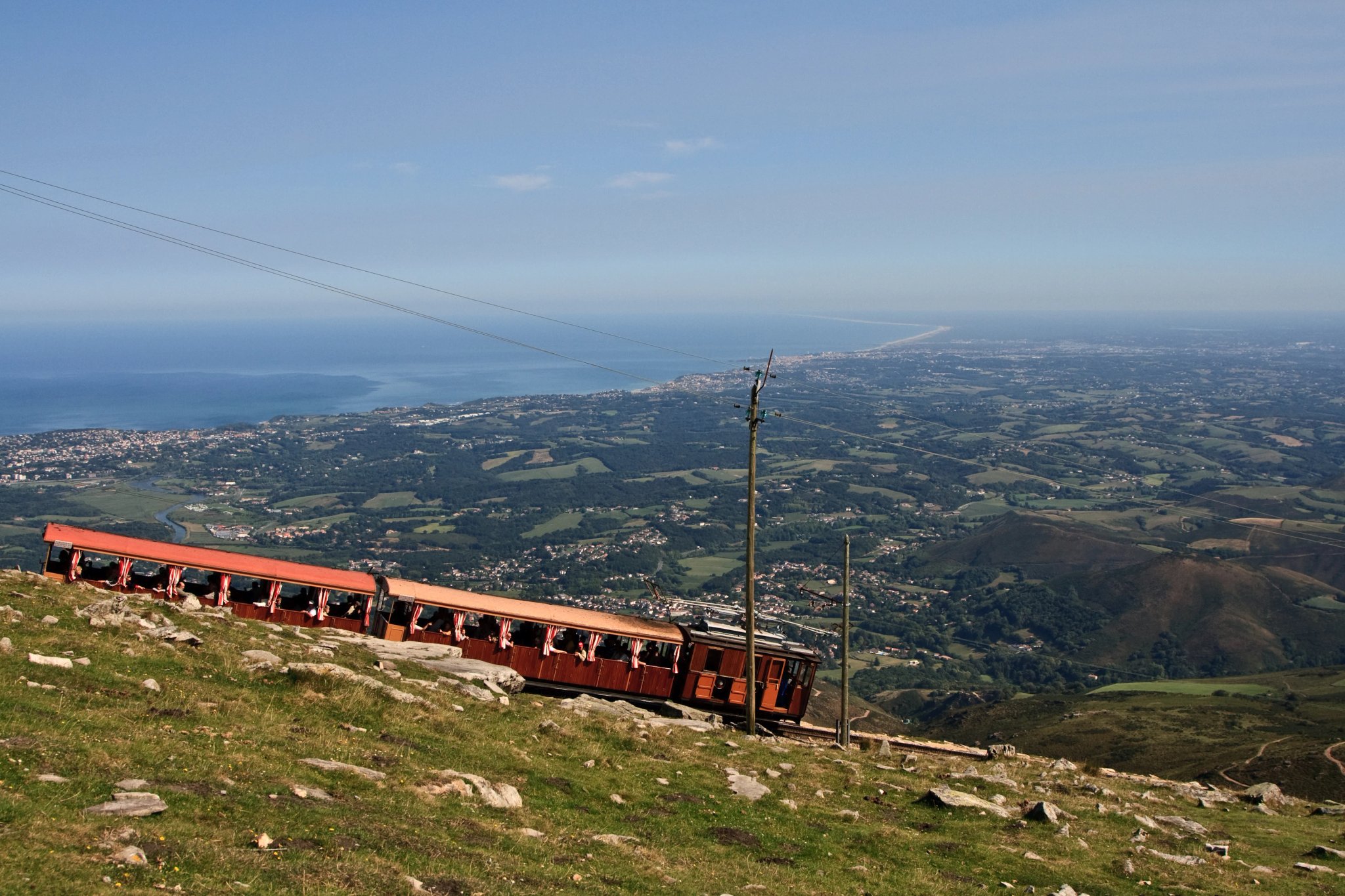
Ending your trip in San Sebastián places you in one of northern Spain’s most connected coastal cities. Its compact layout, reliable transport links, and proximity to major rail and air hubs make onward travel simple and flexible.
By Air
The nearest airports are:
San Sebastián Airport (EAS): Just outside the city; ideal for regional flights
Bilbao Airport (BIO): Northern Spain’s main international gateway, around 1 hour away
Biarritz Airport (BIQ): Excellent option for France-bound flights and European connections
All three airports are reachable by bus, train, or private transfer.
By Train
San Sebastián’s main station offers:
Direct regional services to Bilbao, Vitoria-Gasteiz, Irun, and other coastal towns
High-speed links toward Madrid and Barcelona, via nearby Irun or Vitoria hubs
Bike transport on many services (some require advance reservation or bike bags)
Private transfers or rail tickets can be arranged through us to ensure a smooth, stress-free finish to your Basque cycling holiday.
Self-Guided Cycling in the Basque Country
Planning a self-guided trip in the Basque Country is highly rewarding: compact distances, strong food culture, and a dense network of towns make the region ideal for independent travel. What matters most is having the right support in place, especially in areas where the terrain is steep and the weather can shift quickly.
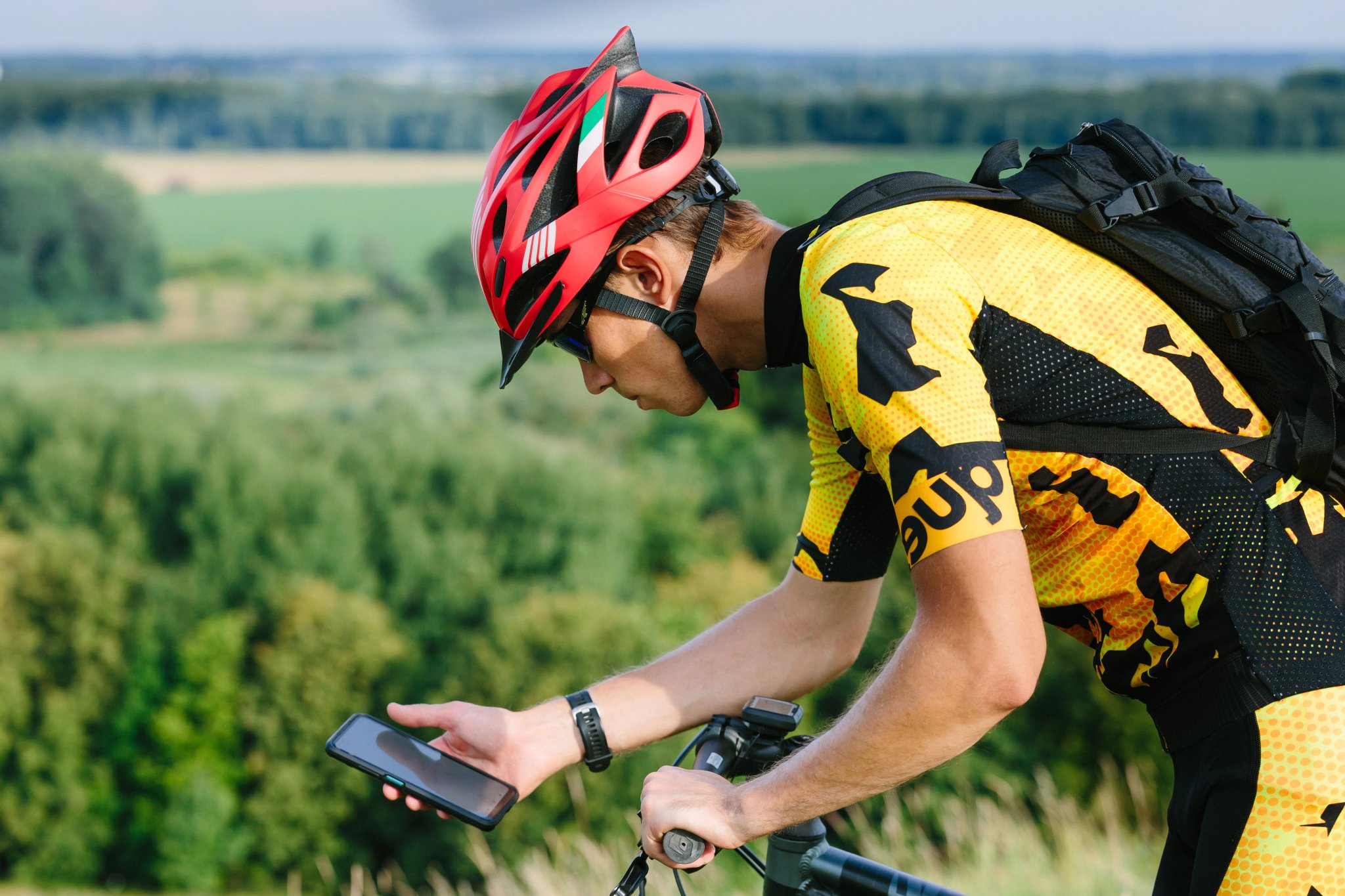
What We Take Care Of
A coherent route flow linking coastal roads, forest climbs, and inland valleys
Comfortable hotels are placed at natural stopping points along the route
Reliable luggage transfers on narrow rural lanes and limited-access streets
Accurate GPX files for all paved, gravel or even forested sections, no matter the signage
Season-aware planning that considers Atlantic winds, humidity, and cloud patterns
Bike-friendly Amenities on the Road
Potable water: Public fountains in towns; fewer on remote forest climbs
Food & cafés: Most villages have a café-bar or bakery suitable for mid-ride stops
Road quality: Well-maintained secondary roads; narrow but smooth rural lanes
Bike services: Available in Bilbao, San Sebastián, and select coastal towns; limited options in remote interiors
With these elements handled and marked in your GPX files, you are free to focus on the riding while everything behind the scenes works as it should.
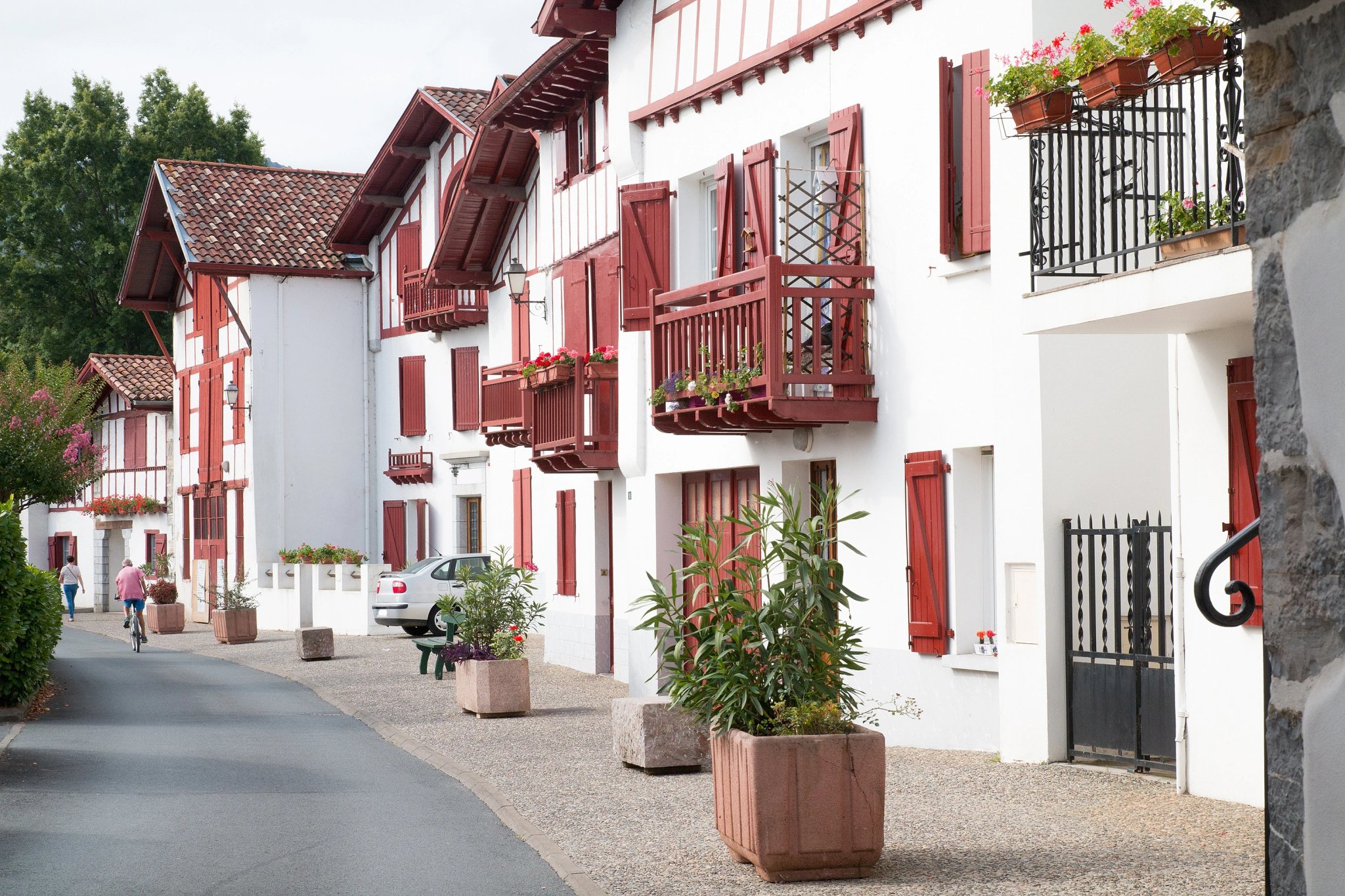
Shaping Your Basque Cycling Adventure
The Basque Country brings together coastal scenery, forested climbs, and a strong regional identity, offering a cycling experience unlike anywhere else in Spain. Distances stay compact, terrain remains engaging, and cultural stops appear naturally along every stage.
If you’re considering a trip, this guide provides a clear overview of the landscapes, routes, and practical details that define riding here. When you’re ready to start planning-reach out to us! We’ll help tailor the route, pacing, and logistics to match your preferred riding style and travel dates.

Hassle-Free
We handle itineraries, accommodations, and anything else you prefer not to deal with, so you can enjoy a carefree holiday.

Completely Customizable
Flexibility is our middle name — whether you want more or less, or just beyond ordinary, we’ll make it happen.

Book with confidence
We are a financially protected company, fully bonded and insured, keeping your money safe and allowing you to travel with confidence.

Unbeatable support
Our 24/7 customer support is where we show our passion, bringing you a better experience by making your well-being our number one priority.
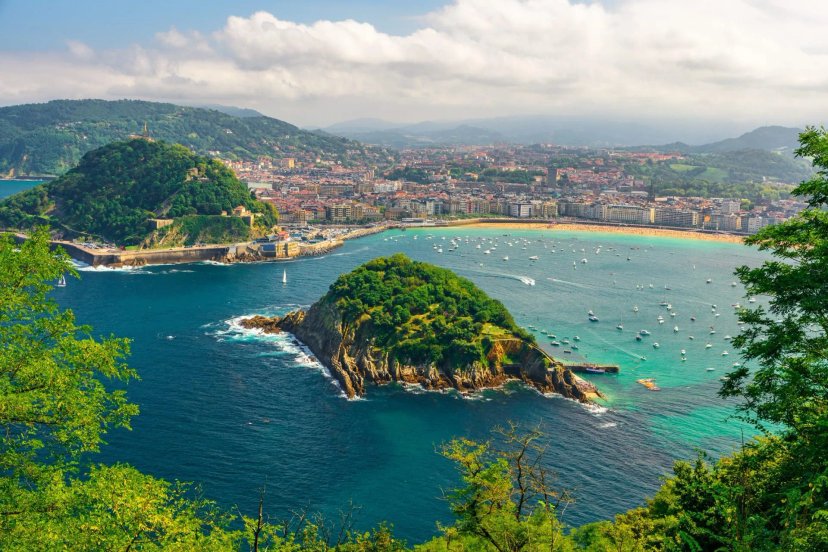
.jpg&w=3840&q=75)
